News
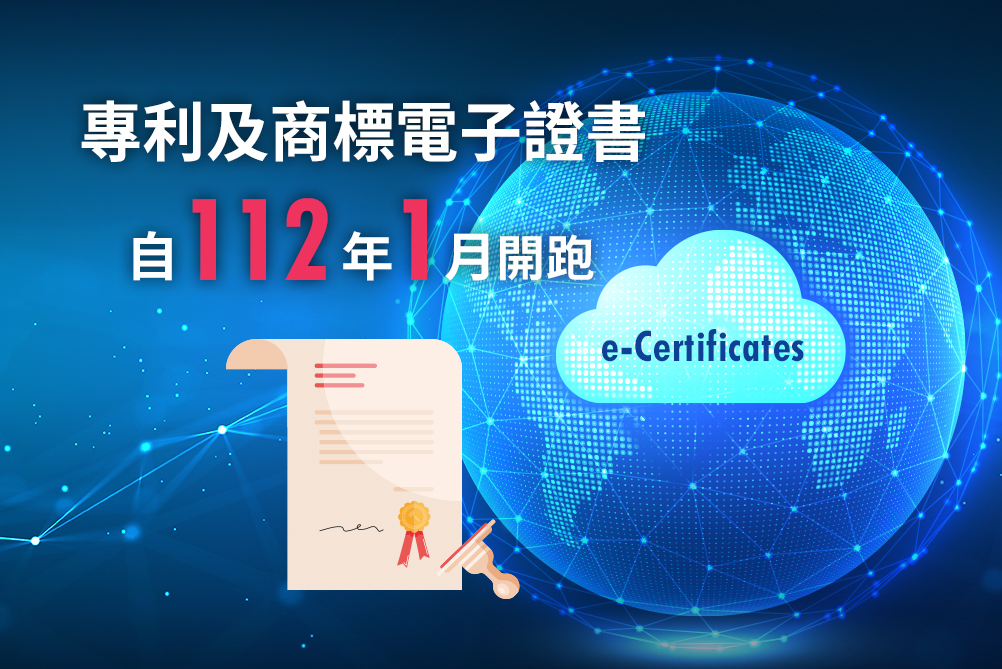 101
101New Upgrades to TIPO’s Digital Services – Online Certificates for Patents and Trademarks Available from 2023
To ensure TIPO offers more comprehensive digital services that better align with global trends, TIPO plans to offer online certificates for patents and trademarks from January 2023. The paperless process will make it more convenient for right holders to obtain and save their certificates, as well as reduce the cost of printing and mailing paper copies – a beneficial step towards achieving sustainable development goals of conserving energy and reducing carbon emissions.For the applicant’s convenience, TIPO will not make online certificates mandatory for all. The applicant may choose either an online or paper certificate when requesting their patent certificate or paying trademark registration fees. Should the applicant require a paper certificate later on, those who choose to receive an online certificate may apply for a paper copy.Upon receiving notification from TIPO that their certificate has been issued, applicants can download the online certificate by entering their verification code at the specified site within six months. Applicants may also obtain their online certificates through the E-SET e-delivery system. Afterwards, applicants will be able to access their online certificates on the e-portal with their digital certificate, under “My Applications.”TIPO's online certificates will be provided via PDF formats for easy circulation. The online certificates will be equipped with anti-counterfeiting measures that require verification and digital signatures, as well as a QR code. Right holders may upload digital files of their certificates onto TIPO's system or scan the QR codes to quickly verify the authenticity of their patent certificates, as well as access any updates to the status of their rights. 102
102Revisions to the Industry Collaborative Patent Interview Pilot Program Will Take Effect Jan 3rd, 2023
TIPO has implemented the Industry Collaborative Patent Interview Pilot Program (hereinafter referred to as "the Program") from November 1st, 2021, to October 31st, 2022. The Program has been well received by the public. To further enhance the process of collaborative patent interviews, TIPO has made revisions to the Program and plans to renew the trial period for another two years. This Program aims to provide applicants with swift and smooth patent rights application experience and assist them in building their patent portfolio. The interviews with applicants allow patent examiners to better understand the application's advanced technical content, thus enabling them to conduct an efficient and high-quality examination. Patent applicants may proactively submit a letter of intent in paper or electronic form. 103
103Patent pledge registration will no longer require a patent certificate, and relaxation of the reasons for applying for the reissuance or renewal of a patent certificate
To relax regulations and safeguard the rights of patent holders and pledgees, revisions were made to the Enforcement Rules of the Patent Act and promulgated on October 20, 2022. The application process for patent pledges have been simplified, and reasons for reissuance or renewal of patent certificates have been relaxed. Highlights of the revisions are as follows:I. Deleted requirement that applicants filing for a patent pledge must include the patent certificate, as well as requirement stipulating that patent pledge information must be included within patent certificate.II. Added “Change in Requisite Information to be Included on Patent Certificate” as a reason for applying for the re-issuance or renewal of a patent certificate. Added the requirement for the Specific Patent Agency to void the original patent certificate upon the re-issuance or renewal of a new patent certificate. 104
104TIPO’s Report on Net Zero Emissions Measures by International CMOs and Music Industries Shares Latest Updates on Carbon Reduction Measures Adopted by Music Industries Abroad!
Climate change and the environment are some of the major issues impacting our generation. As such, TIPO has compiled the Report on Net Zero Emissions Measures by International CMOs and Music Industries focused on efforts by the music industry to combat climate change. The report introduces carbon reduction and net zero emission measures adopted by foreign music industries and CMOs in the fight against climate change. TIPO hopes that by providing a reference for Taiwanese people, our music industries can transition to a more environmentally friendly and sustainable future.The report is available on the official TIPO website under Net Zero Emissions IP Information for public download.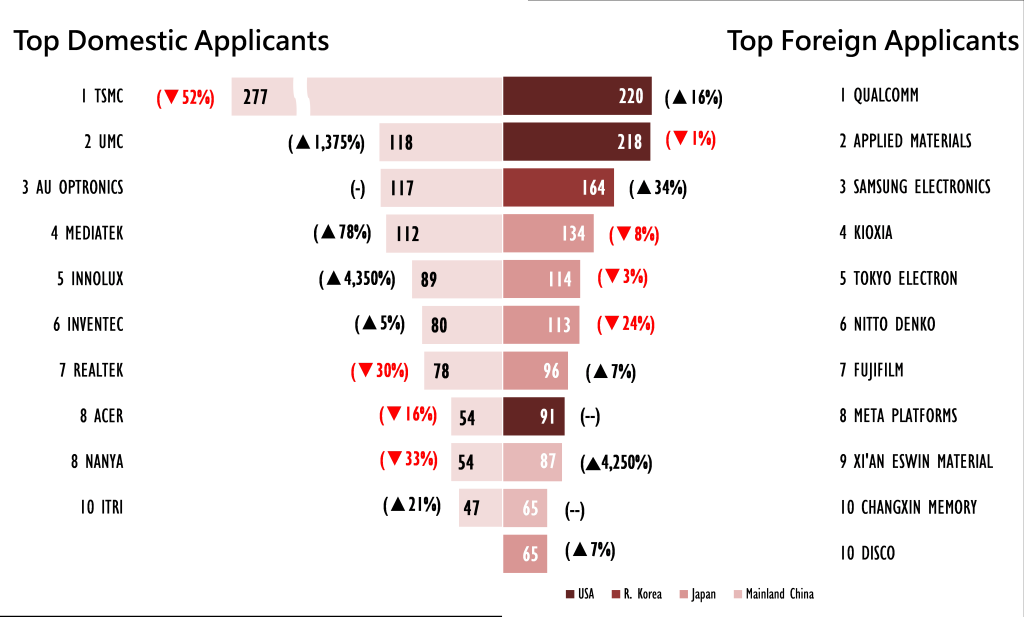 105
105TIPO’s Q3 2022 IPR Statistics Report
In Q3 2022, TIPO received a total of 18,174 patent applications (including invention, utility model, and design patents) as well as 25,310 trademark applications, marking an increase of 0.2% and 2% compared with the same period last year, respectively. Invention patent applications saw a growth of 3%; TSMC, ranking first (277 cases) among resident applicants, outnumbered the others for the seventh year in a row, and Qualcomm (220 cases) led all non-resident applicants. The top 3 industry categories for trademark applications were filed under “Agriculture,” “Business Services,” and “Health.” Most trademark applications filed by residents and non-residents were under “Agriculture” (5,866 cases) and “Research and technology” (1,918 cases), respectively. Uni-President (191 cases) ranked top among resident applicants, whereas Ipplus Technology (150 cases) filed the most applications among non-resident applicants.Patent ApplicationsAmong the three types of patent applications, those for invention patents were the most filed (12,555 cases), marking a growth of 3% over the same period last year (Table 1). The increase was mainly due to the applications filed by non-residents. On the other hand, the number of utility model and design patent applications decreased.The number of invention patent applications from domestic enterprises (3,704 cases) fell by 1%. Of these, the applications filed by large enterprises (3,020 cases) grew by 0.3%, while that of small and medium enterprises (684 cases) decreased.As for resident applications, TSMC filed the most invention patent applications (277 cases), surpassing other domestic applicants for seven consecutive years. The number of applications filed by UMC (118 cases) and Innolux (89 cases) hit their historic highs, seeing a remarkable growth of 13.75 and 43.5 times, respectively, compared to the relatively low applications filed in the same period last year (Figure 2). The former ranked second among resident applicators, the highest position it has ever achieved since TIPO first published its Q3 record in 2012.In terms of design patents, Acer filed the most applications (40 cases) and retained the top spot for two consecutive years. Tarng Yu (15 cases) saw the highest growth rate, with an increase of 150% (Figure 3).Domestic invention patent applications filed by colleges and universities (454 cases) grew by 9%; of these, National Cheng-Kong University ranked first with 36 cases. Research institutions filed 132 applications, and ITRI topped the list with 47 applications. Banks, insurance companies, and securities and futures companies cumulatively filed 62 applications, with Mega International Commercial Bank as the biggest applicant (13 cases).For non-resident applications, invention patents (7,779 cases) grew by 5% compared to Q3 last year and accounted for the majority of all three types of patent applications (Table 1). Among non-resident applicants, Japan led with 2,942 invention patent applications, and those from the USA (1,973 cases), Mainland China (1,006 cases), and R. Korea (689 cases) increased by 9%-36%. As for design patents, Japan also came out on top with 197 applications (Figure 1).As for the top 10 non-resident applicants, Qualcomm led the list of invention patent applicants by filing 220 applications, followed by Applied Materials (218 cases) (Figure 2). Among design patent applicants, Koninklijke Philips ranked first with 49 applications; Apple and Cartier tied for second place, each filing 29 applications (Figure 3).Trademark ApplicationsCompared to the same period last year, trademark applications (25,310 cases) received by TIPO grew by 2%; the number of classes covered (32,105 classes) also showed the same growth rate. The number of resident applications (19,789 cases) was up by 4%, while that of non-residents (5,521 cases) decreased (Table 1) .In terms of the top 5 classes resident applicants filed under, most applications (4,071 cases) were filed under Class 35, “Advertising, Business Management, Retail and Wholesale Services, etc.” The applications under Class 41, “Education, entertainment, etc.” marked the highest growth rate with 18% (Figure 4). Most of the applications of the top 10 applicants increased. Uni-President filed 191 applications, outnumbering all resident applicants (Table 2).Among non-resident applicants, Mainland China filed the most applications (1,153 cases). The applications from Japan (980 cases), R. Korea (472 cases), and Singapore (458 cases) increased; all growth fell in the range of 26%-263%, while those from the USA (808 cases) dropped (Figure 1). In terms of application classes, non-resident applicants filed the most applications (1,089 cases) in Class 9, “Computer and Technology Products, etc.” The applications for Class 3, “Cosmetics and detergents, etc.” saw the highest growth rate with 10% (Figure 5). A first-time applicant, Ipplus Technology, filed 150 applications, outnumbering all other non-resident applicants (Table 3).The top 3 classes trademark applicants filed under were “Agriculture” (6,913 cases), “Business Services” (5,423 cases), and “Health” (4,900 cases). Most applications filed by residents were under the class “Agriculture” (5,866 cases), the majority of which were for the restaurant and accommodation industries. On the other hand, most non-resident applications were filed under “Research and technology” (1,918 cases) (Figure 6).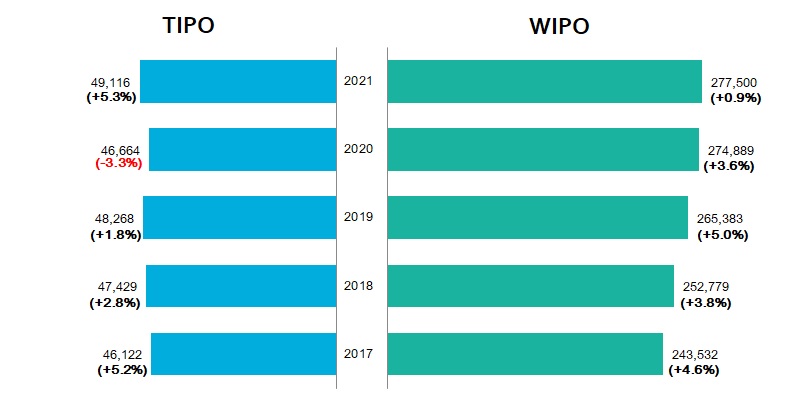 106
1062021 Comparison of Trends in Invention Patent Applications in Taiwan and WIPO PCT Applications
In 2021, TIPO received 49,116 invention patent applications, while WIPO received an estimated number of 277,500 international patent applications (PCT applications) filed under the Patent Cooperation Treaty (PCT). Of Taiwan’s invention patent applications, semiconductors (6,360) and computer technology (4,283) took the top 2 spots among 35 technology fields. However, computer technology (26,092) remained the main technology field among WIPO PCT applications, while semiconductors (8,346) ranked 10th. As for applicants, TSMC and Huawei took the lead in Taiwan and WIPO PCT applications, respectively. Moreover, Qualcomm and Samsung Electronics were both among the top 10 applicants in Taiwan and WIPO PCT applications.Invention applications rebounded in Taiwan while WIPO PCT applications maintained a modest growthOverall invention patent filings in Taiwan rebounded with an increase of 5.3% in 2021, following the decline in 2020 brought on by a drop in non-resident filings due to the COVID-19 pandemic. On the other hand, WIPO PCT applications grew by 3.6% in 2020, attributable to the surging growth in applications from China. However, the number of applications decreased in March and from September to year-end, seeing a slight yearly increase of 0.9% overall (Fig. 1, Fig. 2, and Fig.3).Taipei-Hsinchu accounted for 56.3% of resident invention applications in Taiwan in 2021Applicants residing in Hsinchu City filed the most applications in 2021, at 4,711, followed by applicants from Taipei City (3,282) and New Taipei City (3,007). The top three cities combined accounted for 56.3% of all applications filed in 2021, up by 6.2 percentage points compared to 2017. On the other hand, Hsinchu City saw the fastest growth (+23.3%) in 2021, followed by Hsinchu County (+7.9%) and New Taipei City (+1.6%) (Fig. 4).Semiconductors and computer technology took top spots in Taiwan and WIPO PCT applications, respectively, in 2021In 2021, semiconductors (6,360, +19.6%) topped the technology fields of invention patent applications in Taiwan, while the field of computer technology had the most WIPO PCT applications published (26,092, +7.2%). Both the top ten technology fields in invention applications in Taiwan and WIPO PCT applications included semiconductors, computer technology, electrical machinery, audio-visual technology, measurement, and pharmaceuticals (Table 1).Furthermore, semiconductors topped all technology fields, accounting for 12.9% of invention applications in Taiwan in 2021 but ranked 10th with a share of 3.2% in WIPO PCT applications. This indicates that Taiwan remains outstanding in the semiconductor industry. On the other hand, digital communication and medical technology claimed two out of the top three spots in WIPO PCT applications. However, they were not among Taiwan’s top ten technology fields of invention applications.Health-related technology fields grew both in Taiwan and in WIPO PCT applications, with pharmaceuticals reporting the fastest growth in 2021In Taiwan, pharmaceuticals rose by 26.3% in 2021, followed by biotechnology (+19.1%), while medical technology remained stable (-0.1%) after a surge in 2020. As for WIPO PCT applications, pharmaceuticals also had the fastest growth of 12.8% in 2021, followed by biotechnology (+9.5%) and medical technology (+6.0%) (Table 1, Fig. 5).Certain top filing countries (regions) that mostly filed invention applications in semiconductors, computer technology, or organic fine chemistry in Taiwan primarily filed WIPO PCT applications in computer technology, digital communication, or electrical machineryFor invention applications received by TIPO, Taiwan, Japan, the U.S., and the Republic of Korea filed the most applications in semiconductors (shares of 12.0~18.3%). On the other hand, computer technology accounted for the largest proportion of applications (13.9%) for Mainland China, while Germany filed the most in organic fine chemistry (11.6%). The top three technology fields of the two aforementioned countries (regions) did not include semiconductor (Table 2).WIPO PCT applicants from Mainland China (a share of 15.6%) and the US (12.4%) filed more applications in computer technology; those from Japan and Germany filed intensively for patents related to electrical machinery (10~11%). The top technology field in R. Korea was digital communication (11.5%). The top three technology fields of these countries did not include semiconductor (Table 2).TSMC led in the number of invention patent application filings in Taiwan, while Huawei remained the top filer of WIPO PCT applications in 2021As regards invention applicants in Taiwan, TSMC (1,950) filed the most applications in 2021, followed by Qualcomm (845) and Applied Materials (758). Industrial Technology Research Institute (ITRI), coming in tenth, is the only research institute among the top 10 applicants. The top 10 WIPO PCT applicants were all businesses. Of them, Huawei topped with 6,952 WIPO PCT applications published in 2021, followed by Qualcomm (3,931) and Samsung Electronics (3,041); the latter two both claimed top 10 spots in Taiwan as well (Fig. 6).Seven of the top 10 applicants in Taiwan were also top filers in the field of semiconductors, while most top 10 WIPO PCT applicants had the greatest shares in digital communicationSeven of the top 10 applicants in Taiwan (Fig. 6), TSMC, Qualcomm, Applied Materials, Samsung Electronics, Tokyo Electron, AU Optronics, and Kioxia, are also among the top 10 applicants in semiconductors. Furthermore, TSMC, Applied Materials, ASML, and AU Optronics claimed the top in computer technology, electrical machinery, optics, and audio-visual technology, respectively (Table 3).Six of the top 10 WIPO PCT applicants filed most applications in digital communication, including Telefonaktiebolaget LM Ericsson, Huawei, Guang Dong OPPO Mobile, LG Electronics, Qualcomm, and Samsung Electronics. On the other hand, Mitsubishi Electric had its largest share in thermal processes and apparatus, BOE Technology filed intensively in semiconductors, Panasonic Intellectual Property Management filed mainly in electrical machinery, and Sony filed most in computer technology (Fig. 7). For more information (in Mandarin), please visit https://www.tipo.gov.tw/tw/cp-174-219414-a1c98-1.html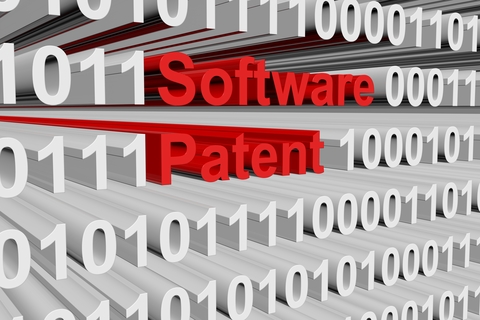 107
107TIPO Publishes English Version of the “Patent Examination Guidelines, Part II: Substantive Examination for Invention Patents, Chapter 12 Computer Software Related Inventions”
TIPO has released its English version of the “Patent Examination Guidelines, Part II: Substantive Examination for Invention Patents, Chapter 12 Computer Software Related Inventions.” This should help to enhance the international IP community’s understanding of Taiwan’s patent examination process of computer software related inventions and improve services provided to foreign applicants of computer software related inventions. Those interested are welcome to access the Guidelines below.Click the attachment below to download the “Patent Examination Guidelines, Part II: Substantive Examination for Invention Patents, Chapter 12 Computer Software Related Inventions.” 108
108TIPO has Added a New Chapter on “Green Industries” to the Industry Trademark Application Strategy Manual for Designated Goods and Services in Response to Goals to Reach Net Zero by 2050
The Executive Yuan has passed amendments to the Greenhouse Gas Reduction and Management Act on April 21, 2022. The Act has been renamed the “Climate Change Response Act,” and officially declares net zero emission of greenhouse gases by 2050. The specific approach targets greenhouse gases from the manufacturing, transportation, agricultural industries, as well as from residential activities and utilizes negative carbon technology (carbon capture, storage, and reuse) and natural carbon sinks (forests and ocean sorption) to balance carbon emissions in order to reach net zero emissions. TIPO has added the “Green Industries” chapter to the Industry Trademark Application Strategy Manual for Designated Goods and Services, and the chapter is divided into six fields: “Green Energy,” “Clean Energy Transportation,” “Carbon Rights, Carbon Economy and Related Commercial Trading of Electricity,” “Pollution Treatment and Reutilization,” “Green Buildings to Zero-Carbon Buildings,” and “Green Industry-Related Certification Mark, Certification Process Guidance, and Educational Training.” This distinction will help industries understand the scope of trademark rights they should get to protect their businesses, make the right choice of designated good or service when registering a trademark, and cross-reference the goods and services listed in the NICE classification for their industry. The Industry Trademark Application Strategy Manual for Designated Goods and Services is available for public reference. 109
109“Patent Trend Analysis of International Carbon Capture Technology” is now Available on the TIPO Website for Public Reference
To help businesses better understand the global patent trends in Carbon Capture, Utilization, and Storage (CCUS), TIPO has compiled graphics on the Patent Trend Analysis of International Carbon Capture Technology based on the three major themes of CCUS and according to the international patent classification (IPC) on carbon capture and sequestering, which were established in the 2010 WIPO IPC Green Inventory. The analysis also refers to the relevant classifications and key words in the Cooperative Patent Classification (CPC). TIPO used Derwent Innovation to compile patent information laid open/published by various countries before the end of December 2021 and conducted overall patent analysis, analysis of relevant technology patents, global flow of applications, and analysis of major patent offices. The full report is expected to be completed by the end of this year and shall be published on TIPO’s website.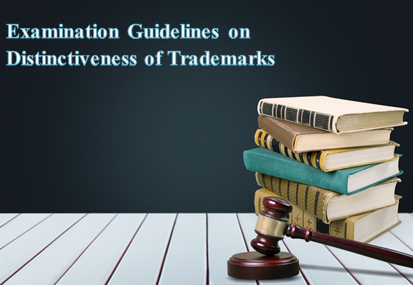 110
110Revisions to the Examination Guidelines on Distinctiveness of Trademarks Were Promulgated on July 26, 2022, and Will Take Effect on September 1
To enhance the examination principles for distinctiveness of various types of trademarks, TIPO has promulgated revisions to the Examination Guidelines on Distinctiveness of Trademarks. TIPO has provided examples for different types of trademarks and ensured that the basis on which distinction is determined for trademarks aligns with current market transactions. Main revisions are as follows: I. Made adjustments to the different composition patterns of foreign alphabets; provision of reference examples for determining whether descriptions are designed and distinctive. II. Added assessment criteria and example explanations for “alphanumeric combinations” and “numbers” in response to differences in use between various industries. III. Added following categories with examples: “popular graphics,” “purely informational graphics,” and “commercial design graphics.” IV. Added criteria for country names, geographical images, and geographical names used in descriptions of product origin, as well as misleading use or misrepresentation thereof for product origin. V. Added assessment criteria and reference examples for names and portraits of well-known public figures who are recently deceased; to further exemplify what constitutes a “portrait,” additional cases for reference are also provided. VI. Added determining criteria for religious images and terms; added examination principles for marks related to traditional and cultural activities. VII. Revised criteria for slogans, common words, new terms, and technical terms, and adjusted the examination guidelines for “idioms.” VIII. Trademark graphics which include “the full name of the company” or “domain names” are considered strictly informational in order to prevent affecting the certainty of the scope of trademark rights and the function of correctly indicating the source of the product or service in the event that trademark rights are transferred or there is a change of name after registration.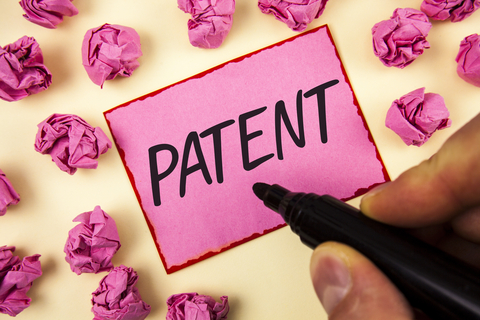 111
111Revisions Have Been Made to Chapters 3, 6, 7, 8, 9, and 14 of Part II “Substantive Examination for Invention Patents” of the Patent Examination Guidelines, Which Take Effect on July 1, 2022
To reflect the practical needs of patent examination, TIPO has added new examination criteria and notes to the Patent Examination Guidelines, which include two applications (invention and utility model) for the same creation, disclaimers, final notice limitations, and deposit of biological materials. TIPO hopes to enhance the quality of patent examinations by providing unified standards. Main revisions include the following: I. Part II Chapter 3 “Patentability” Additional paragraphs 5 and 6 have been added under “5.7.2 Notes for Examination” for when two applications (invention and utility model) are filed for the same creation. Specifically, it details examination principles for the invention application if – during the examination of the invention patent, or after approval but before invention published – the utility model application is invalidated but has yet to be final and binding. II. Part II Chapter 6 “Amendments” Under “4.2.2 Permissible Omissions,” in the event that the applicant amends the claim by negative limitations to exclude any overlap with prior art (disclaimers) before the issuance of an office action from the patent examiner, the applicant should still provide the patent examiner with prior art documentation and an explanation for further assessment. If no such documentation is provided, the application is deemed to introduce new matter. Exceptions are made for applications where prior art is already disclosed in the descriptions, patent claims, or drawings of the original application as filed. III. Part II Chapter 7 “Office Action and Final Decision” Under 3.1.2 “Reduction of Patent Claim Scope,” stipulations in paragraph 6 that require “partial deletion of cited or dependent claims and a breakdown of remaining claims” have been moved to the newly added paragraph 7. It also states that besides the aforementioned situation, the additions of new claims are not included within the “reduction of patent claim scope” referred to in the revision limitations of the final notice. IV. Part II Chapter 9 “Corrections” Under “6. Notes for Examination,” patent examination principles have been added with regard to negative limitations to exclude any overlap with prior art (disclaimers) in accordance with revisions to chapter 6. V. Part II Chapter 14 “Biology-Related Inventions” A new paragraph (3) has been added to “4.2.4 Notes for Deposits” which stipulates that the applicant, in accordance with the provisions of Article 27 Paragraph 5 of the Patent Act, should include documentation proving that biological materials deposited in a depository designated by a foreign country in its territory exist and are viable. VI. Other Revisions Other revisions include changes to the wording to reflect new regulations, as well as to ensure consistency and prevent misrepresentation within all chapters. Link: Revisions to Chapter 3, 6, 7, 8, 9, and 14 of Part II “Substantive Examination for Invention Patents” of the Patent Examination Guidelines (Mandarin)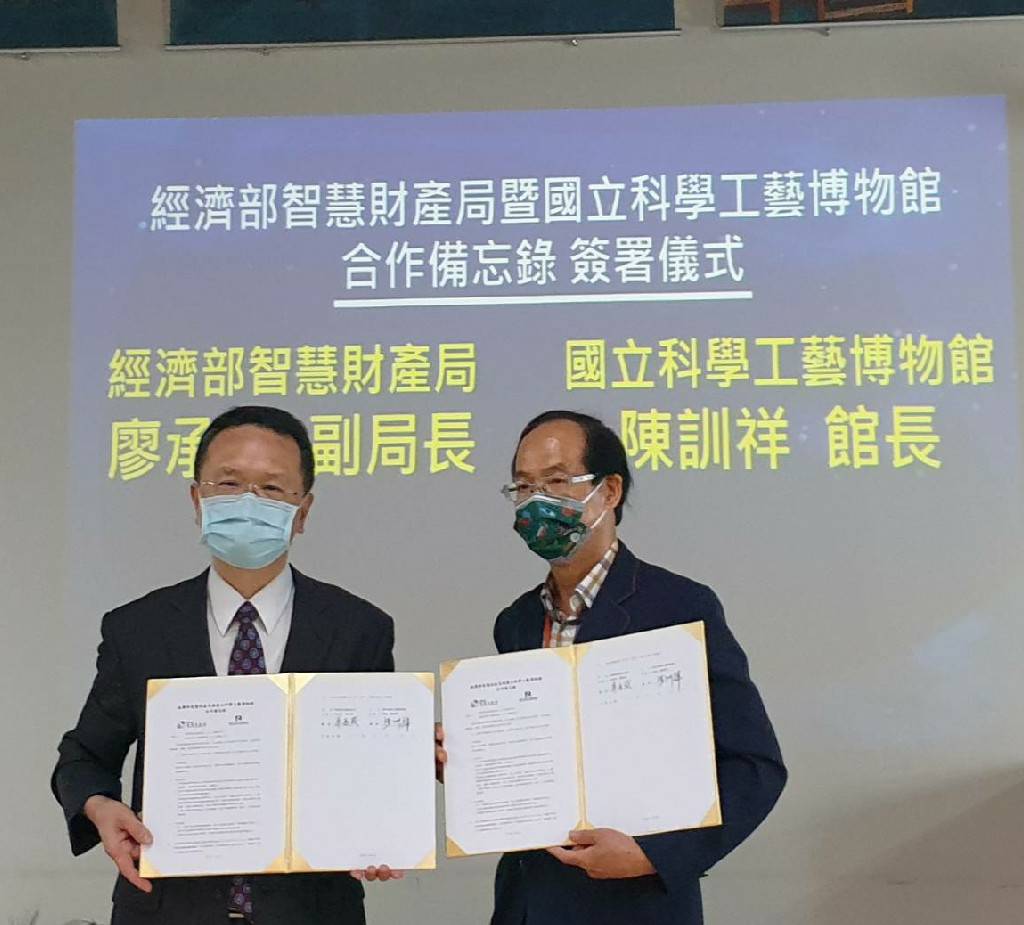 112
112TIPO Signs MOU with the National Science and Technology Museum (NSTM) and Organizes the “Rising Stars in Invention” Special Exhibition
On June 24, 2022, the Taiwan Intellectual Property Office (TIPO) of the MOEA signed an MOU with the National Science and Technology Museum (NSTM). The event was witnessed by an inventor who represented recipients of the National Invention and Creation Award. TIPO and NSTM shall collaborate on the donation, collection, exhibition, advocacy, education, and promotion of award-winning entries for the National Invention and Creation Award to preserve important artifacts and maintain a record of the timeline for national inventions and creations. TIPO also hopes this will provide public service and education by facilitating the collection and exhibition of artifacts. The “Rising Stars in Invention” Special Exhibition was also held on the same day.The NSTM is located in Kaohsiung and is Taiwan’s first applied science museum. The NSTM is also one of the six museums under the management of the Ministry of Education. Therefore, in addition to preserving artifacts, it also bears the responsibility of promoting education. NTSM’s partnership with TIPO began in 2014 when they co-organized the donation and collection of award-winning entries for the National Invention and Creation Awards. Over 90 entries in 49 categories have been collected through 8 years (and four competitions) of effort. The official signing of the MOU will serve as a basis for the systematic collection of outstanding Taiwanese inventions and creations.The name of the exhibition, “Rising Stars in Invention,” compares the brilliance of each award-winning recipient and entry of the National Invention and Creation Award to that of a new star that shines a light into our lives. The hope is also that future inventors may visit the exhibit and become rising stars in the field of invention themselves. The exhibit is divided into five major areas: “Inventions are Everywhere,” “The Devil is in the Details,” “We Want You!,” “Creative Invention Mindset: TRIZ,” and “Classics for Posterity,” allowing visitors to view and experience excellent and representative inventions and creations up close. The exhibition is open until August 21, 2022, and all interested are welcome to visit Kaohsiung.The “Rising Stars in Invention” Special Exhibition is the first exhibit of its kind curated from award-winning entries and organized by TIPO and NSTM. Both shall continue to collaborate in the future and tap into their individual core strengths and advantages to collectively promote outstanding inventions and creations – ensuring widespread and comprehensive development for innovative technology and education.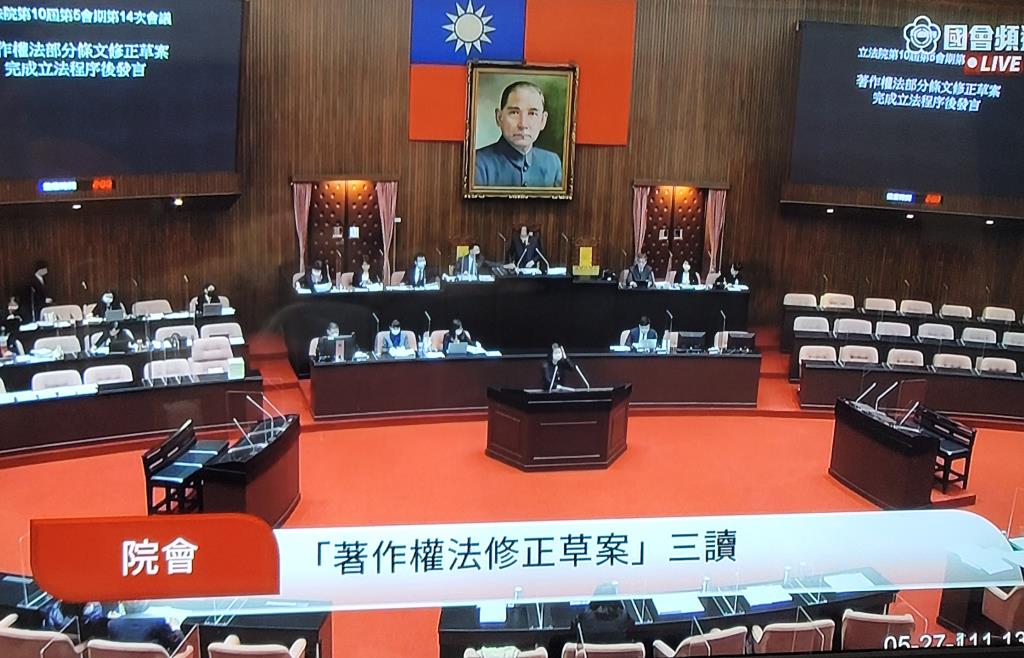 113
113Partial Draft Amendments to the Copyright Act Passes Third Reading at Legislative Yuan to Meet Distance Learning Needs
In response to current technological developments, educational policies, and pandemic measures, the Legislative Yuan passed partial draft amendments to the Copyright Act by a third reading on May 27. The amendments target aspects of distance learning as an extension of the classroom, such as the rules for fair use of copyrighted works, allowing teachers to provide classroom instruction without worry. In accordance with digital education policies, the amendments also allow textbook preparers to transmit digital copies to teachers and students to promote the use of e-schoolbags and alleviate the burden of heavy backpacks for students. Additionally, to facilitate the cultural development of Taiwan, the amendments also enable the National Central Library (NCL) to digitally reproduce its collection, under certain conditions, for readers to access online within the library.Main amendments include:1. Fair use of copyrighted works by schools for registered students during distance learningCurrent law only allows teachers to print and distribute – to a reasonable scope – copies of copyrighted works to students during class. In response to technological developments and to ensure that teachers can provide remote education as they do in the classroom, the amendments stipulate that – within the necessary scope of classroom instruction – teachers may offer reference materials or information to students online. The amendments come in response to distance learning needs after school shut-downs due to the pandemic and aim to make education more effective, as well as to align with international and technological development trends.In addition, to avoid excessive infringement of copyrights, schools are required to take reasonable technical measures (e.g.: account passwords) to prevent students not taking the class from accessing the courses. Because remote education is instrumental to public interest, school teachers are exempt from obtaining paid authorization for the use of copyrighted works in their lessons to ensure that teaching activities can resume unimpeded. (Article 46)2. Not-for-profit remote education may use copyrighted works and are required to pay remunerationWith regard to remote education directed at the general public (e.g.: not-for-profit MOOCs education platform eDX, etc.,), current law only regulates television-based education like that of open universities and does not include rules for the fair use of copyrighted works for online education. As such, amendments were drafted to regulate the fair use of copyrighted works by educational institutions or schools for the purpose of distance online learning. Because use may vary from traditional and tv broadcasts to synchronous or on demand online transmissions, and the courses are aimed at the general public – a broader and different base than the aforementioned registered students – these institutions must still pay for copyright authorization within the necessary scope of education to ensure the rights of copyright holders.As for-profit distance learning activities (e.g.: online education provided by cram schools, etc.,) are not directed at public interests, the amendments stipulate clearly that paid authorization is required for use of copyrighted works to protect the rights of copyright holders. (Article 46-1 )3. Textbook preparers may transmit digital copies to teachers and students to meet the need for e-schoolbagsCurrent regulations stipulate that although textbook preparers may use copyrighted works to examine or compile textbooks, they may only provide paper copies of textbooks to teachers and students, which is unable to meet the need for e-schoolbags for students in the digital era. Therefore, amendments were drafted to allow textbook preparers to digitally transmit textbooks under reasonable conditions. In order to ensure the rights of copyright holders, remuneration must be paid for the authorized use of copyrighted works for the aforementioned situation. (Article 47)4. The National Central Library (NCL) may create a digital collection that is only accessible to visitors on the library's intranetWith the aim to facilitate cultural development with the National Central Library, the amendments allow NCL to digitally reproduce its collection in advance as a precaution against damage or loss, so that contemporary works may be better preserved at the NCL. Another amendment stipulates that the NCL and other library institutions may, under certain restrictions, allow readers to access the digital collection via computers within the libraries, in lieu of lending or allowing physical access to the original paperback. The amendments not only aid in the digitalization of library services but also facilitate the preservation of physical library collections. (Article 48)The MOEA emphasizes that digital development facilitates the diversified use of copyrighted works. The world has been impacted by the global pandemic in recent years and as such, distance learning has become an important form of education. The amendments were drafted in response to technological developments that facilitate educational instruction, the use of e-schoolbags, and the need for libraries to preserve their collections and provide digital services. These amendments to the Copyright Act – approved by the Legislative Yuan – align with Taiwan’s current need for digital education policies, promote development of diverse educational modes, and hold profound significance for the distribution of knowledge.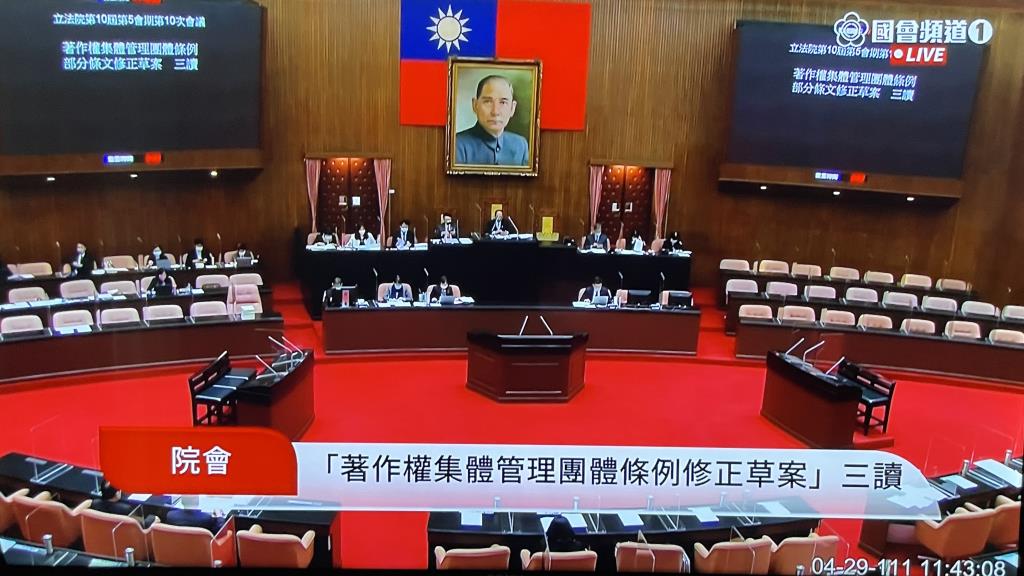 114
114Partial Draft Amendments to the Copyright Collective Management Organization Act Passes Third Reading at the Legislative Yuan
The Legislative Yuan passed partial draft amendments to the Copyright Collective Management Organization Act at the third reading on April 29. The amendments ensure smooth operation, increased transparency, and prudent management of Taiwan’s collective management system to protect the rights of members and facilitate circulation of copyrighted works. After adjustment, a total of 6 amendments were additions, and 15 were revisions – the main highlights of which are as follows:I. Introduction of a public consultation mechanismWhen a CMO applies for an establishment permit, TIPO shall make the information publicly available on their official websites for general copyright users to leave comments, which shall serve as reference for TIPO when processing the permit application.II. Term limits for management-level positions and internal controlsTo ensure that a CMO can fulfill its duty of good governance, the amendment would curtail the duration and number of terms for the positions of director and supervisor, reducing the possibility of a monopoly or any abuse of power. The amendments also stipulate the need for internal controls to manage personnel, finances, and operations, etc.; royalties must also be deposited in designated accounts to ensure CMOs conduct operations in a reasonable, prudent, appropriate, and transparent manner.III. Use of Technology to Enhance Management and Operations of CMOsTo facilitate the development and use of technology, a new amendment has been added that stipulates TIPO’s responsibility to counsel CMOs in the use of innovative technology for more efficient management and operations thereof, as well as to lower the cost of copyrights licensing.IV. Expansion of TIPO’s Supervisory and Guidance CapacityAmendments have been added ensuring TIPO’s authority to supervise and penalize any CMOs in violation of the law. TIPO is authorized to request that CMOs submit financial declarations and plans for improvement within a specified timeframe. TIPO also has the power ex officio to suspend or dismiss any directors or supervisors found guilty of illegal conduct. If the CMO commits a major violation of the law by misappropriating allotted funds or not allocating royalties in accordance with the law and fails to rectify their actions, then TIPO has the power to revoke its establishment permit and eliminate any CMOs not adhering to prudent management practices. 115
115Seminar on IP Landscape in New Southbound countries
To actively assist Taiwanese companies in building IP portfolios in New Southbound countries, on August 27 (Tuesday) and 28 (Wednesday), 2019, TIPO will hold a seminar on IP Landscape practices in New Southbound countries with Taiwan Patent Attorneys Association (TWPAA) at Tsai Lecture Hall, College of Law, National Taiwan University in Taipei.The seminar has the intellectual property office officials and patent attorneys of Malaysia, the Philippines, Thailand, Vietnam, Indonesia, and India as guest lecturers. They will speak about the invention patent and utility model patent systems (such as application requirements, the time limit for OA response, and patent term), patent examination practices, and the things to note when filing applications and protecting patents for Taiwanese companies in New Southbound countries. IPR can protect a company’s business achievements while generating more value for the company. When entering the local market of a New Southbound country, if using the country’s IPR system properly and setting appropriate IP portfolio strategies, the company shall be able to leverage its advantages more. TIPO expects the seminar to help attendants learn more about the IPR practices in New Southbound countries.For more information, please keep a close eye on TIPO’s website and our Facebook fan page.

 Sitemap
Sitemap FAQs
FAQs Feedback
Feedback Bilingual Glossary
Bilingual Glossary